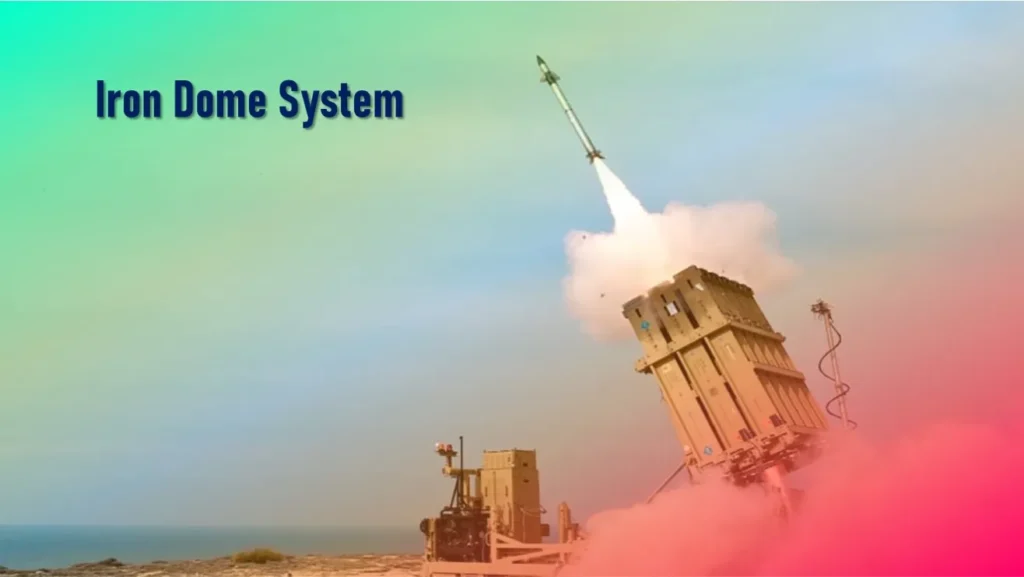Discover the Iron Dome: Israel’s cutting-edge air defense system engineered to intercept and neutralize short-range rockets and artillery threats. Learn how this innovative technology safeguards civilian populations and critical infrastructure, reducing casualties and damage with its high success rate.
Overview
- Purpose: Developed by Israel to intercept and destroy short-range rockets and artillery shells.
- Detection Range: Identifies rockets at a distance of 4 to 70 km.
Milestones
- Final Testing: Completed in July 2010.
- Operational Status: Declared operational in 2011; used in conflicts against Hamas in 2012 and 2014.
Deployment and Collaboration
- Operators: Israel and Singapore.
- India-Israel Deal: A $2 billion deal signed in 2017 for India to acquire the Iron Dome system.
Comparative Analysis on Indian BMD and Iron Dome
Common Objectives
Both Indian BMD and Iron Dome aim to protect against incoming missile threats but differ significantly in the types of threats they are designed to counteract.
Technical Capabilities
Indian BMD is designed for longer ranges and higher altitudes, whereas Iron Dome targets short-range threats.
International Collaboration
While Indian BMD is an indigenous programme, the Iron Dome system represents international defence collaboration, particularly between India and Israel.
Status and Future Developments
Indian BMD is waiting for government approval for further deployment, whereas the Iron Dome is already operational and has been combat-tested.
What is the Iron Dome?
The Iron Dome is a mobile all-weather air defense system developed by Israel to intercept and destroy short-range rockets and artillery shells fired from distances of 4 kilometers (2.5 miles) to 70 kilometers (43 miles) away.
How does the Iron Dome work?
The system uses radar to detect incoming threats and calculates their trajectory. If a threat is deemed to be heading towards a populated area or sensitive target, the Iron Dome launches an interceptor missile to destroy the incoming projectile before it can reach its target.
What kind of threats can the Iron Dome intercept?
The Iron Dome is primarily designed to intercept short-range rockets, mortars, and artillery shells. It has been particularly effective against rockets fired by militant groups such as Hamas from the Gaza Strip into Israeli territory.
How effective is the Iron Dome?
The Iron Dome has been highly effective in intercepting and destroying incoming threats. It boasts a success rate of around 90% in intercepting rockets it engages, significantly reducing casualties and damage in Israeli communities.
Can the Iron Dome intercept long-range missiles?
While primarily designed for short-range threats, the Iron Dome has been adapted to intercept longer-range missiles in some cases. However, its effectiveness decreases as the range of the threat increases.
How many Iron Dome batteries does Israel have?
As of the latest available information, Israel has deployed several Iron Dome batteries across the country to protect key population centers and strategic locations. The exact number may vary due to ongoing developments and security needs.
Is the Iron Dome solely a defensive system?
Yes, the Iron Dome is designed purely for defensive purposes. It is meant to protect civilians and infrastructure from incoming threats and does not have offensive capabilities.
How much does the Iron Dome cost?
The cost of the Iron Dome system varies depending on factors such as the number of batteries deployed, maintenance expenses, and research and development costs. However, estimates suggest that each interceptor missile fired by the Iron Dome can cost tens of thousands of dollars.
Has the Iron Dome been exported to other countries?
Yes, several countries have expressed interest in acquiring the Iron Dome system or similar missile defense technologies. However, as of now, Israel has primarily kept the technology for domestic use.
What are the limitations of the Iron Dome?
While highly effective, the Iron Dome does have some limitations. It may struggle to intercept very large barrages of incoming threats simultaneously, and its effectiveness decreases against more advanced missile systems. Additionally, it cannot provide complete protection against all types of aerial threats.
Also Read:
What is Integrated Guided Missile Development Programme (IGMDP)
Government initiatives for Renewable Energy in India
